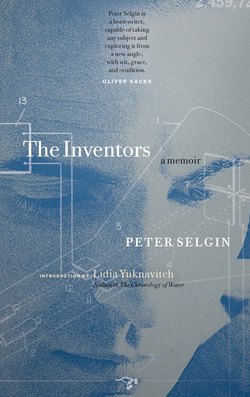Читать книгу The Inventors - Peter Selgin - Страница 20
На сайте Литреса книга снята с продажи.
ОглавлениеI’VE LIVED HERE FOR THREE YEARS NOW, SINCE I TOOK a tenure-track position at the state university where I teach writing. When I told them I was moving here, my friends predicted that I’d go crazy, that after thirty-five years in New York City life in a small southern town would be the end of me – and not just any small southern town, but Milledgeville, Georgia, the former home of Flannery O’Connor and Central State Hospital, once the biggest psychiatric facility in the country, the place where “they” sent you if they wanted to get rid of you. Watch out, people down here used to joke, or they’ll send you to Milledgeville. Everyone knew what that meant.
I guess I didn’t watch out.
* * *
NOVEMBER.
A cloudy, breezy day – the breeze strong enough to raise whitecaps on the lake. The sky gray, the water a shabby brown, the trunks of the trees lining the shore blackened by last night’s rain, everything a variation on a theme of grays and browns. The muted colors complement my mood, the season having laid out my emotional palette for me – umbers raw and burnt, a dab of ochre, smoke black and bone white.
For my canvas I have my notebook, the cardboard kind used by generations of school kids, with faux black-and-white marble covers, $1.99 at K-Mart. My writing desk: a twelve-foot Vermont Packboat: folding caned seats, mahogany gunwales, lightweight Kevlar hull (deep blue), bronze oarlocks, spruce oars. When not in use it hangs from the ceiling of the basement, where I keep my studio, mounted with a pulley system.
And though my desk rows beautifully, most of the time I’m happy to just drift along, as I’m doing now – not just physically, on the water, but mentally, in my thoughts. The Japanese have a word for it: zuihitsu. Literally it means “follow the brush,” let the mind flow freely, as it sees fit, from thought to thought with no agenda. Though it pertains to a genre of Japanese literature consisting of loosely connected musings, zuihitsu can apply as well to other forms of creation, to poetry, painting, or music. In this case the term is doubly apt, for as my rowboat drifts so do my musings. If she didn’t have a name already, I’d call her Zuihitsu. But she’s got a name: Audrey.
All of which is by way of explaining that I write these notes with little respect for order, logic, or causal relationships – not out of carelessness or laziness, but because a person adrift in a rowboat on a lake can hardly be expected to do otherwise.
* * *
I TRADED NEW YORK CITY FOR A LAKE AND GOT A GOOD DEAL.
The best things about living here are silence and solitude; the worst things are the same. Sometimes it gets so quiet it’s spooky. Not long ago, while working, I was disturbed by the sound of what I took to be rap music, a low steady bass note throbbing somewhere. Since my neighbors here are mostly older retired people I figured it had to be coming from a boat. But there were no boats passing. My years in New York have made me paranoid about noise. Thirty-five years of car alarms, truck-backing signals, and ghetto blasters waking you up after midnight can do that to you. Hoping to locate the source of the sound, I went outside and heard nothing. But as soon as I went back to my desk it started again.
What the hell, I thought.
Then I realized it was my own pulse throbbing in my ears.
That’s how quiet it gets here.
I’m not complaining. The silence is good for writing, a welcomed collaborator, the clear lens through which I look into the past. Looking through it now, I see the Building, the yellow stucco shack that was my father’s laboratory, where he built his inventions.
United States Patent 2,964,641, DEVICE FOR THE IDENTIFICATION OF ENGRAVED DOCUMENTS. “Apparatus for identification of engravings, said engraving comprising a surface bearing a plurality of spaced, approximately parallel lines of a particular unique configuration and of substantial width, separated by spaces of different reflectance from said lines, said apparatus comprising a complimentary surface bearing lines corresponding in configuration to the spaces of said first surface but of greater width, means for optically superimposing said two surfaces to produce a uniform optical effect over the combined surfaces when the two sets of lines are complimentary and positionally matched, shifter means for shifting said surfaces with respect to each other in a first direction substantially perpendicular to at least some of said lines to produce a variation in the combined optical effect at a particular frequency determined by the distance between said lines and the speed of said shifting, photoelectric means responsive to said variations in optical effect to produce electrical signals at said particular frequency of occurrence corresponding to said variations, circuit means responsive to said signals, and tuned to said frequency to produce a control signal at a predetermined amplitude of said signal frequency.” Also known as “The Dollar Bill Changing Machine.” Filed April 26, 1957.
